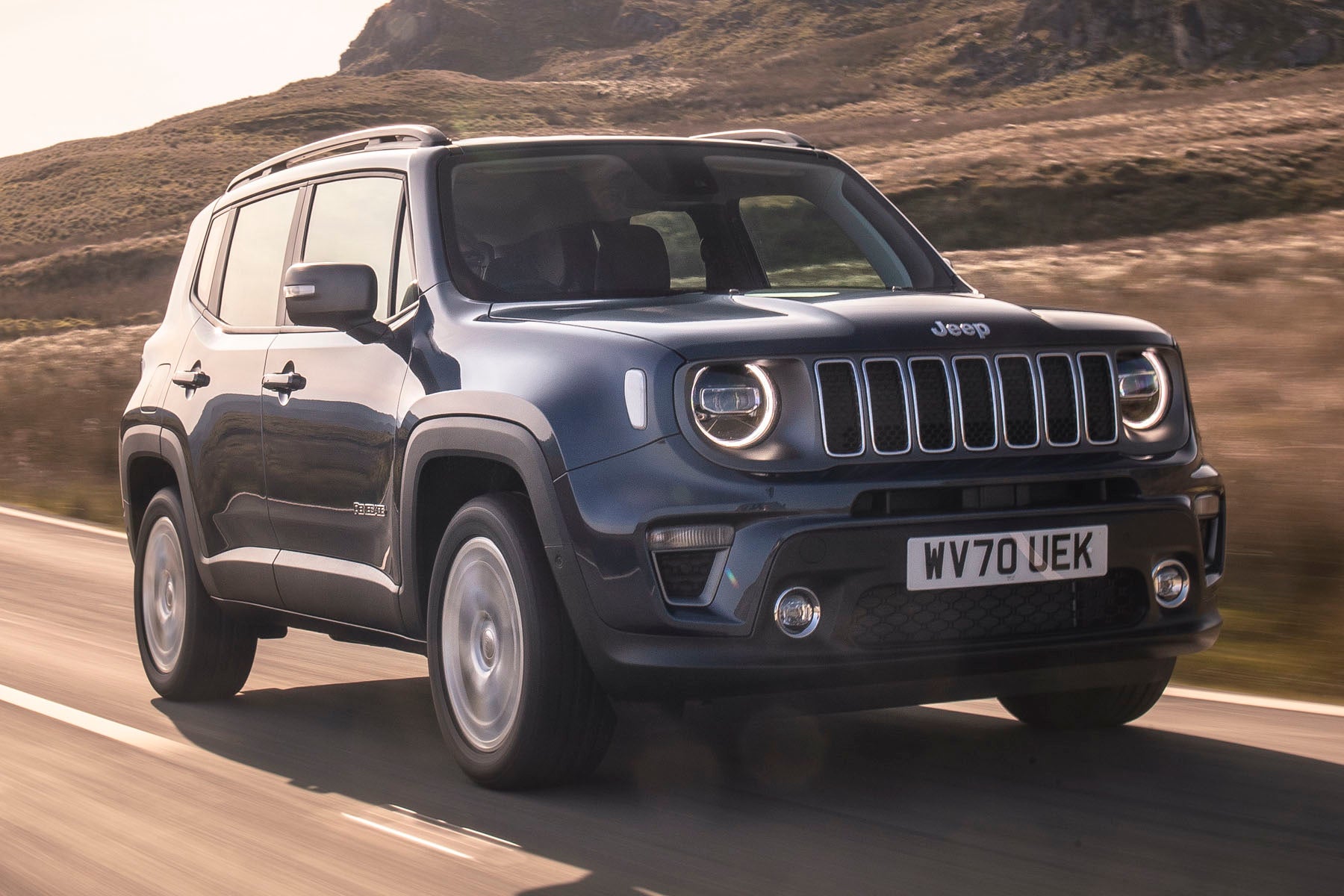Jeep Renegade Review 2025: Price, specs & boot space
Written by Andy Brady
Quick overview
Pros
- Brings a sense of fun to an otherwise rather staid market
- Four-wheel-drive models are capable off-road
- More spacious than some alternatives
Cons
- Interior looks (and feels) pretty cheap and nasty
- It’s not very sophisticated on the road
- You’d have to really want a Jeep
Overall verdict on the Jeep Renegade
"In this 2024 Jeep Renegade review we're taking a close look at yet another contender in the crowded small SUV sector. The unmistakably chunky looks and vertical grille of a Jeep holds special appeal for some, but behind the mask is a small SUV with a modest set of abilities. It delivers a less-than-stellar driving experience, the interior feels off the pace compared with rivals and it's arguably not as good as the Fiat 500X with which it shares a lot of hardware. It is usefully roomy and decent value for money, though, and your kids will probably think it's ace."
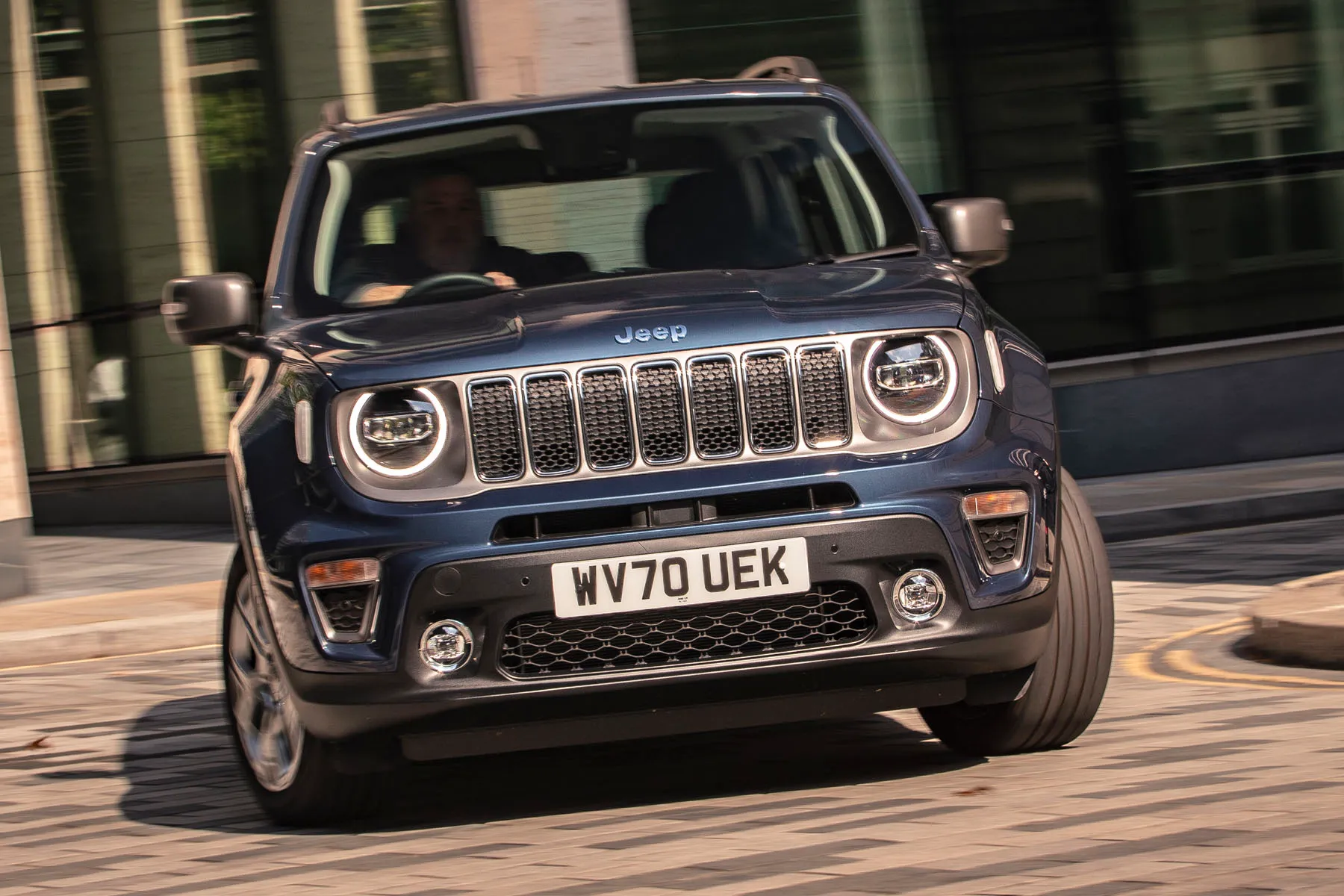
You’d struggle to tell that the Jeep Renegade shares its platform and engines with the decidedly unrugged Fiat 500X. For its smallest model, Jeep has pulled out all of the stops, with quirky looks, a rugged interior and genuine off-road ability (if you buy a four-wheel-drive version).
It’s easy to see the appeal when rivals range from the competent (if a bit bland) Renault Captur to the rather naff Ford EcoSport. The Jeep badge alone will be enough to attract the attention of a lot of crossover buyers, with its military off-roader connotations and slightly brash image.
The good news is that the Jeep Renegade is a fairly affordable way into Jeep ownership. An early model could cost you less than £5,000 (depending on specification), while even as-new examples start from around £15,000. That’s tempting value, and it shouldn’t cost a lot to run, either.
There are numerous petrol and diesel engines available, with some of the most frugal capable of late-40s mpg. The diesels are a little unrefined, though, (it’s almost like Jeep’s done away with some of the sound insulation to make the Jeep Renegade feel like a proper off-roader), so we’d stick with a petrol - particularly if you don’t cover many miles.
The Jeep Renegade range was updated in 2018 with the addition of new 1.0- and 1.3-litre petrol engines (as per the Fiat 500X), while in 2020 a plug-in hybrid version was also added called the Renegade 4XE, alongside a mild-hybrid 1.5-litre petrol.
The 1.3-litre is let down by its standard automatic gearbox, so we’d go for the little 1.0-litre three-cylinder unit. It might sound small for a car like this, but it’s quicker than you’d expect and also the most refined choice.
The Jeep Renegade 4XE PHEV uses the same 1.3-litre engine but adds a 60PS electric motor driving the rear axle to give it four-wheel-drive, and a total of 190PS or 240PS in Trailhawk spec. That gives it a useful performance boost, and it can cover a claimed 26 miles on electric power alone.
The mild-hybrid version is also worth a look if you drive a lot in town. It’s unusual among mild hybrids in that it can drive for short distances on electric power alone, which could reduce your fuel bills considerably. It’s also a good chunk cheaper than the PHEV.
With light steering and compact dimensions, the Jeep Renegade is an easy car to drive around town. The numb steering and notchy gear change mean it’s a bit frustrating to drive out of town, though, while a surprising amount of body lean through corners adds to the old-school feel.
If you fancy a bit of mud-plugging, the off-road-biased Trailhawk model is the way to go. This adds the kind of things that’ll appeal to 10-year olds: extra underbody protection, bespoke off-road wheels and hill descent control to help tackle steep slopes. It also comes with four-wheel-drive, of course, which provides plenty of reassurance in poor conditions but increases fuel consumption the rest of the time.
The Jeep Renegade feels fairly spacious inside, although it’s a long way from being a premium alternative to cars like MINI's Countryman. You could be forgiven for thinking it’s a much older cabin than it actually is, with lots of harsh plastics and chunky (but low-rent) buttons. An updated 8.4-inch infotainment system arrived in 2018, though, bringing with it Apple CarPlay and Android Auto. The system was overhauled again for 2024, with a 10.1-inch scheen and wireless Apple Carplay and Android Auto.
Should you buy the Jeep Renegade? As a new car it’s very hard to recommend, as it’s the best part of a decade old, but there's plenty going for it as a used car. For instance, it’ll stand out on your driveway more than Renault Captur or Nissan Juke, and it’s available in some bold colours. It’s also the best-value Jeep on the market, and it won’t cost a fortune to run.
Looking for a used car for sale? We've got 100s of Jeep Approved Used Cars for Sale for you to choose from, including a wide range of Jeep Renegade models for sale.
Is the Jeep Renegade right for you?
What's the best Jeep Renegade model/engine to choose?
What other cars are similar to the Jeep Renegade?
Comfort and design: Jeep Renegade interior
"The Jeep Renegade has the kind of rugged interior you'd expect of a proper SUV. That said, one person's 'rugged' is another person's 'cheap and nasty'."
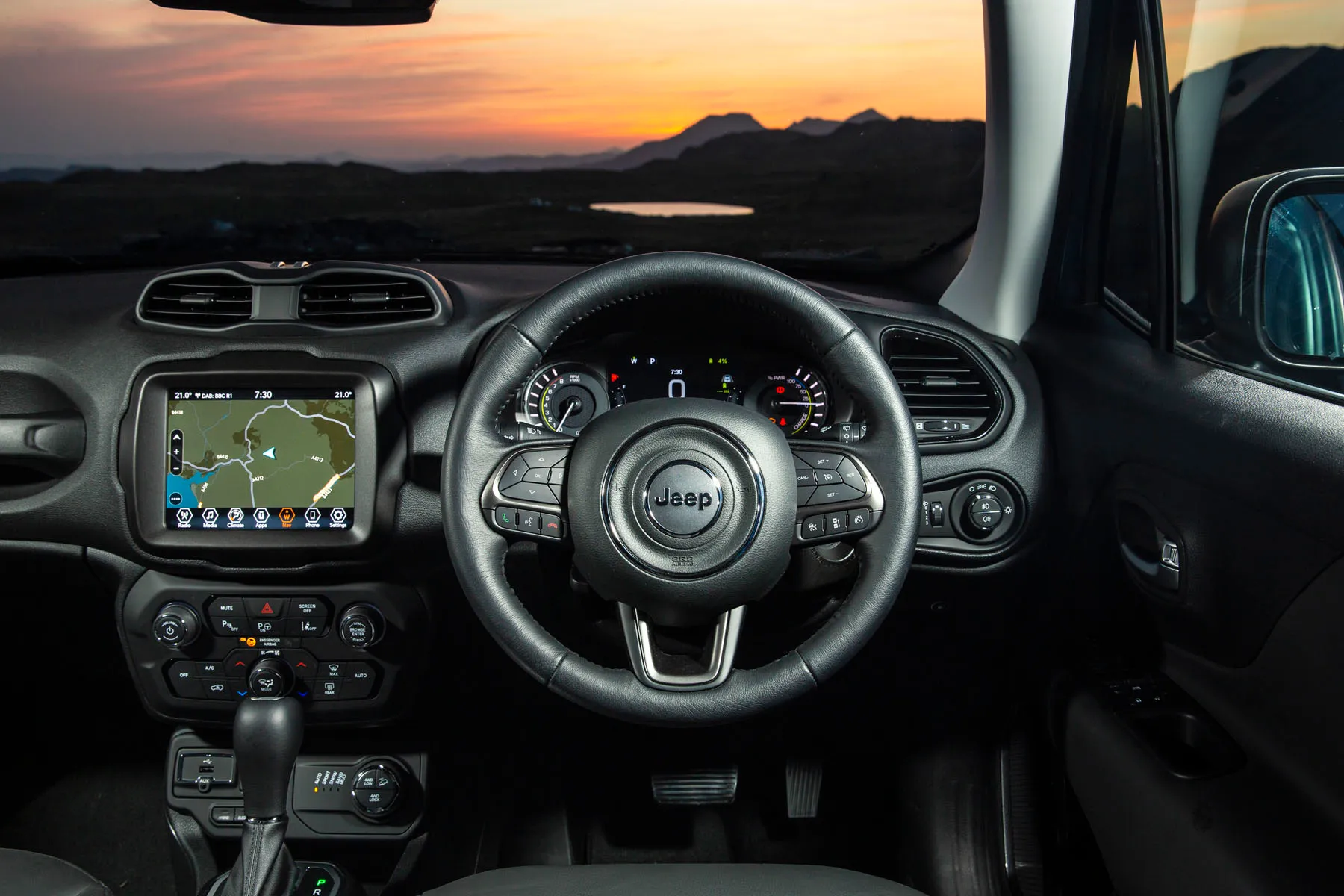
The layout is fairly conventional and intuitive, with all the main controls easy to operate. The instrument dials are simple and, on Limited models and up, include a large colour display between them, giving you all the trip information in an easy-to-read and nicely designed fashion. Lower trim levels have to make do with a smaller monochrome display, unless you’re looking at a 2024-onwards model, in which case all versions get the 10.25-inch digital instrument cluster as standard.
Quality and finish
Infotainment: Touchscreen, USB, nav and stereo in the Jeep Renegade
Space and practicality: Jeep Renegade boot space
What engines and gearboxes are available in the Jeep Renegade?
"Poor gearbox and engine combinations let down the Jeep Renegade, although most models have reasonable running costs. The Jeep is also one of the few cars of its ilk that you can realistically take off road and it's also a good choice if you need a small SUV for towing."
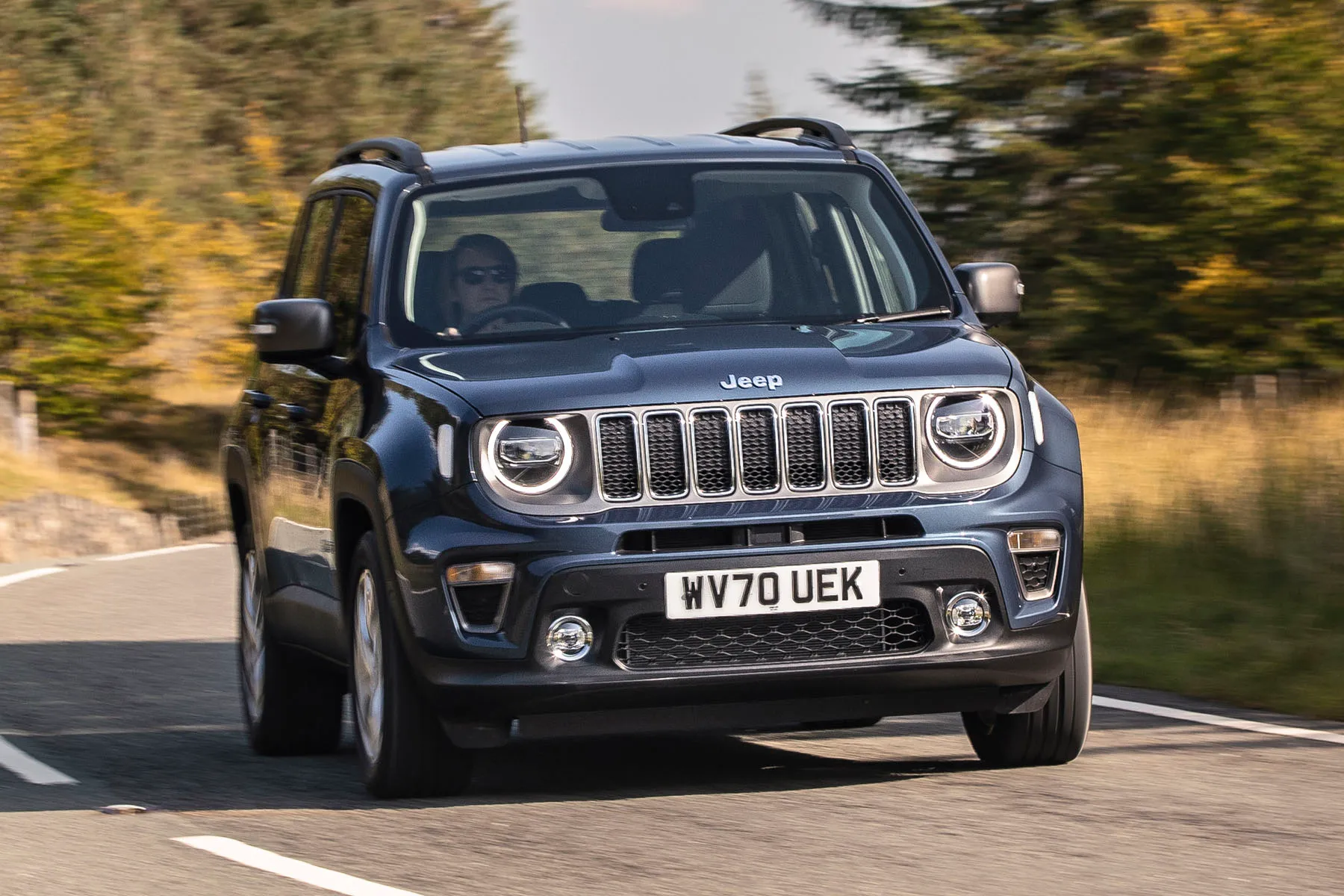
The Jeep Renegade has been available with a variety of different engines over the years. At launch, there was a 1.6 petrol with 110PS or 1.4 MultiAir turbos with 140PS or 170PS. The 1.6 is best avoided unless you mainly travel around town on your own, because if you need to go faster or carry people or stuff, it starts to feel rather underpowered. The 1.4s are fine, though. Diesel choices included a 1.6 with 120PS or 2.0-litre units with 140PS or 170PS, but we never got to try these.
Things changed with a facelift in 2018. The petrol range then began with a 120PS three-cylinder 1.0-litre petrol. It's a thrummy little motor that works fine in town but can feel a little lacklustre when speeds rise. Sure, it'll handle motorway slogs with no issues, but if you're planning on overtaking streams of traffic on A roads then, well, you might want to rethink that strategy.
Then came the more powerful 150PS, four-cylinder 1.3-litre petrol, which wasn't much better, because it was hamstrung by its standard six-speed automatic gearbox. Perplexingly, 0-62mph takes 11.8 seconds, exactly the same as the 120PS model with its six-speed manual.
Next up are the 170PS four-cylinder 2.0-litre diesel and the 180PS version of the four-cylinder 1.3-litre petrol. Both get a smooth-shifting, nine-speed automatic gearbox and four-wheel drive – so they're good for off-roading and towing – but they were expensive when new and so are harder to find on the used market, although if you can, they're good value due to the Renegade's steep depreciation.
Things have since changed again. The entry-level motor is now the 1.5-litre mild-hybrid Jeep Renegade E-Torque petrol, which offers a modest 130PS. It makes a decent fist of getting the Renegade where you want to go, but it needs to be driven with care to get anywhere close to the official combined fuel consumption of 48.7mpg.
From 2022, this system was upgraded to allow small amounts of electric-only driving – this version is badged e-Hybrid and should deliver considerably better fuel economy. It’s decent to drive too, with extra oomph from the electric motor that’s incorporated into the seven-speed automatic gearbox.
Probably the best of the bunch is the plug-in hybrid option, the 4XE, which takes the 1.3-litre petrol engine and adds a 60PS electric motor, giving either 190PS or 240PS depending on the trim level. That gives it useful performance: in the top spec Trailhawk, the 0-62mph sprint is dispatched in a sprightly 6.9 seconds. Fuel consumption is given at as much as 141.2mpg, and the car can travel up to 26 miles in EV mode.
Handling and ride quality: What is the Jeep Renegade like to drive?
Refinement and noise levels
Safety equipment: How safe is the Jeep Renegade?
MPG and fuel costs: What does a Jeep Renegade cost to run?
"As you’d expect, the plug-in hybrid Jeep Renegades are potentially the most efficient, but it very much depends on how many short journeys you do and how often you can charge the battery."
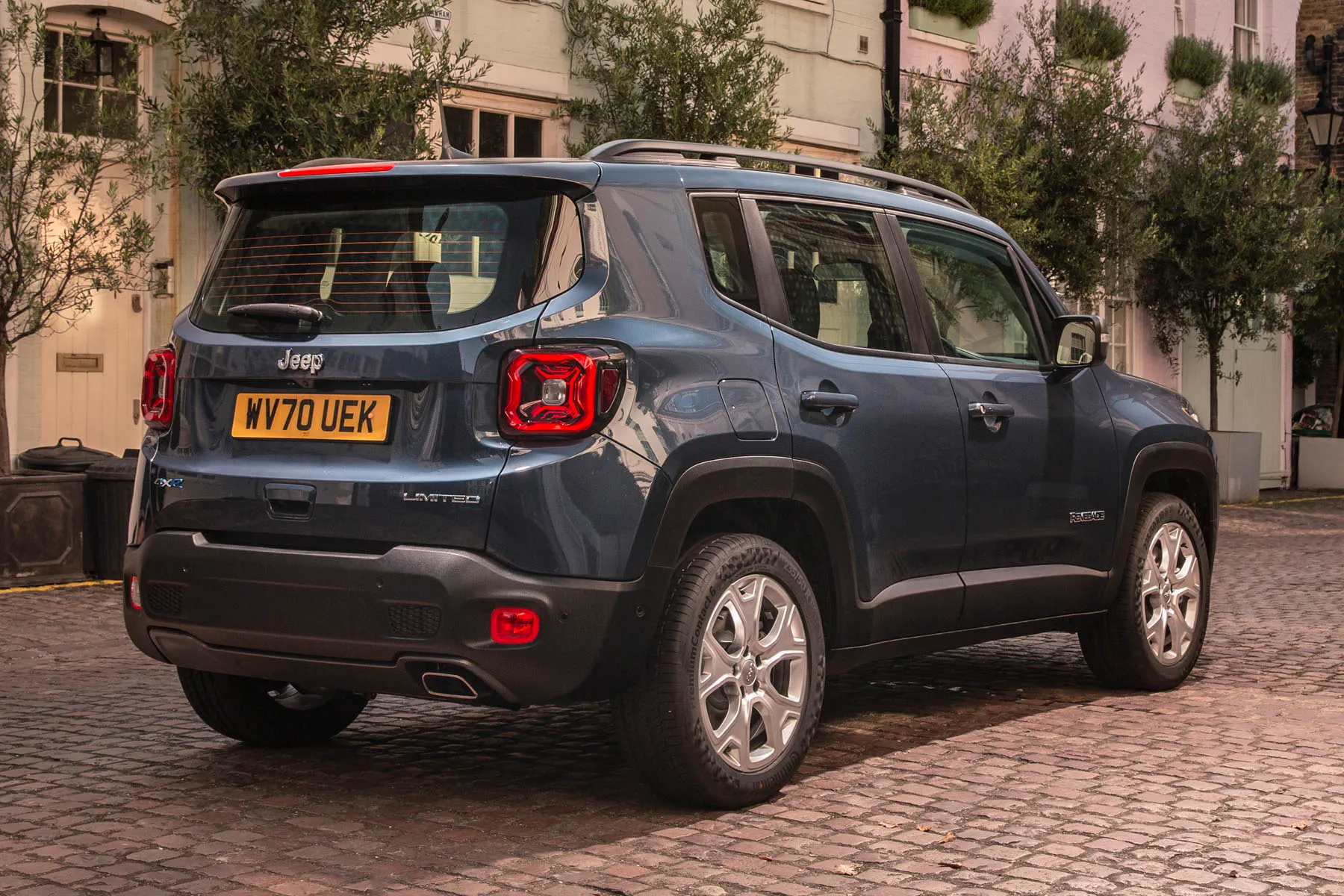
The 120PS 1.6-litre diesel officially returns up to 48.7mpg with the manual gearbox, dropping to 47.1mpg as an automatic. The 140PS 2.0-litre 4x4 provides up to 40.9mpg, falling to 37.7mpg with the automatic transmission. The off-road Trailhawk model with a 170PS version of this engine returns 35.8mpg.
There’s not much difference in fuel economy between the 1.0- and 1.3-litre petrol models. The 1.0-litre officially returns 37.2mpg while the 1.3 achieves up to 39.8mpg in WLTP tests. Whichever way you slice it, none of these figures are particularly dazzling. Things are better with the Renegade e-Hybrid, which promises up to 49.5mpg – it’ll be better if most of your driving is stop-start around town, and it’s not a huge jump up in price, either.
The official WLTP fuel consumption of the Jeep Renegade 4XE plug-in hybrid versions is anything between 141.2mpg and 156.9mpg, but as you'll probably know, this is not especially representative of the real world because the official tests are unrealistically flattering to plug-in hybrids. If you can charge at home and spend a lot of time running around town on short journeys then you can use EV mode for a large proportion of the time, but on longer journeys you'll find a diesel engine will almost always be a better bet.
How reliable is the Jeep Renegade?
Insurance group and costs
VED car tax: What is the annual road tax on a Jeep Renegade?
How much should you be paying for a Jeep Renegade?
"The earliest examples of the Jeep Renegade are now in pretty cheap territory. Less than £7,000 is required to put you in an early 2015 or 2016 car with around 70,000 miles on the clock, and it's entirely possible that these examples will have either one of the punchier engines, or posher trim levels, or both."
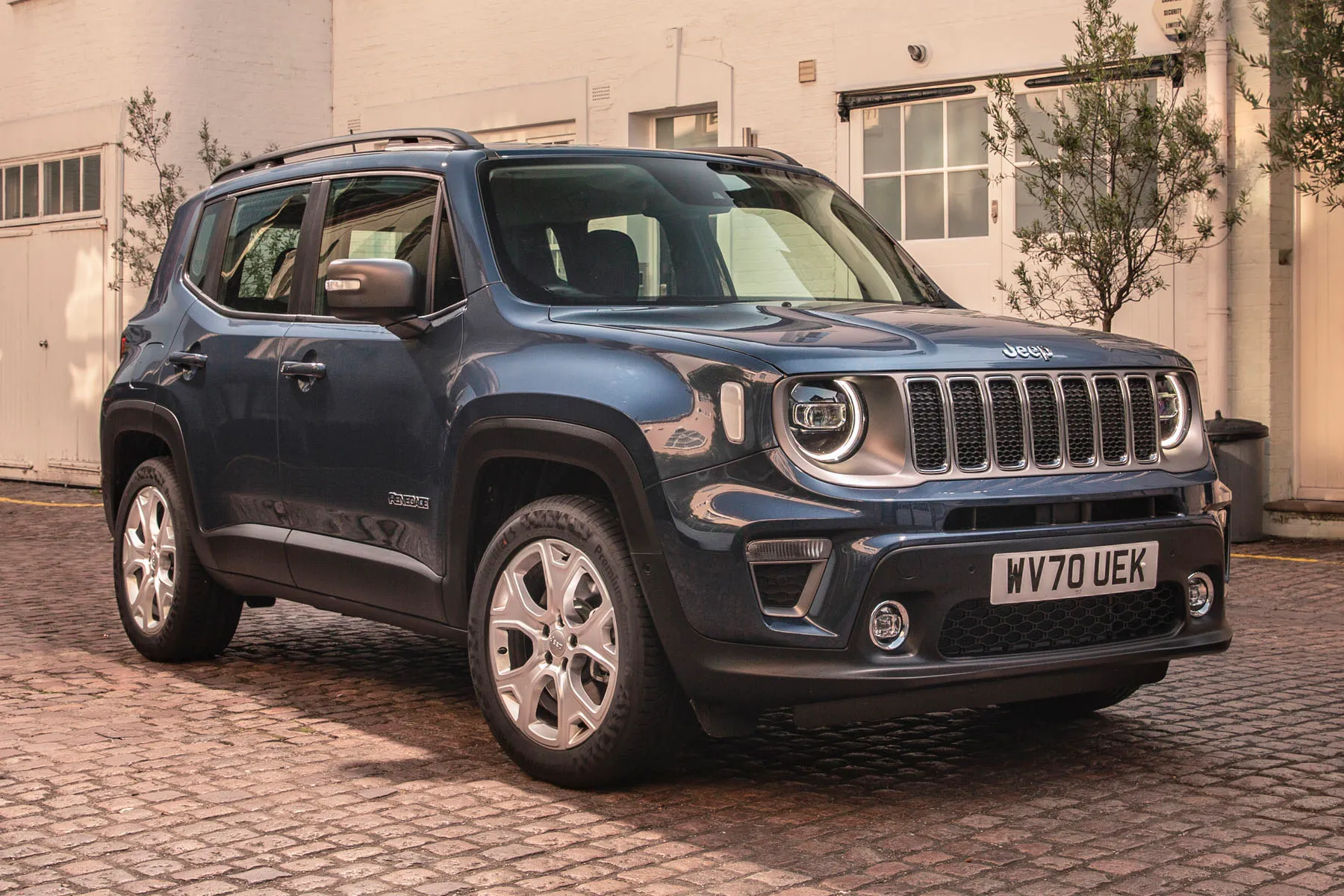
Plug-in hybrid variants are thinner on the ground given that they were introduced a lot more recently, but if you can find an early one from 2021 or thereabouts, it can be yours for around £18,000.
Trim levels and standard equipment
Ask the heycar experts: common questions
Is a Jeep Renegade a good car?
What problems do Jeep Renegades have?
Does the Jeep Renegade have a Fiat engine?
Jeep Renegade cars for sale on heycar
Jeep Renegade1.3 T4 GSE Limited 5dr DDCT
201937,382 milesPetrol£322 mo£14,082
PE14 0SFJeep Renegade1.3 T4 GSE Limited 5dr DDCT
202134,637 milesPetrol£276 moor £16,499£16,999
£500 offHP27AZJeep Renegade1.0 T3 GSE Night Eagle II 5dr
202236,684 milesPetrol£241 mo£14,995
DeliveryJeep Renegade1.0 T3 GSE Night Eagle II 5dr
201926,038 milesPetrol£298 mo£13,697
HU130EGJeep Renegade1.5 e-Hybrid S 5dr DCT
202222,493 milesPetrol£333 mo£19,999
HP27AZ
Get our latest advice, news and offers
Keep me updated by email with the latest advice, news and offers from heycar.
By submitting you agree to our privacy policy
